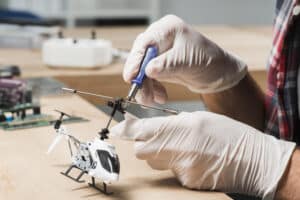Imaging’s Vital Role in Electronics QC
Enhancing Electronics Quality Control through Imaging Technology Leveraging Ultrasonic Scans for Precise Defect Detection in PCBs In the competitive landscape of electronics manufacturing, a robust testing regimen is crucial for ensuring the production of high-quality components. This article explores the utilization of imaging technology, specifically ultrasonic scans, to identify and address defects like delamination in […]

Enhancing Electronics Quality Control through Imaging Technology
Leveraging Ultrasonic Scans for Precise Defect Detection in PCBs
In the competitive landscape of electronics manufacturing, a robust testing regimen is crucial for ensuring the production of high-quality components. This article explores the utilization of imaging technology, specifically ultrasonic scans, to identify and address defects like delamination in printed circuit boards (PCBs).
The Role of CCD Line-Scan Cameras in Quality Control
Manufacturers continually seek efficient imaging devices for quality control in the production of PCBs and semiconductors. CCD line-scan cameras, equipped with light-sensitive pixels, emerge as a viable option.
This section delves into the advantages of using these cameras, considering factors like miniaturization trends and production scalability.
Simulating Environments and Testing Electronics for Durability
Beyond visual inspection, electronics must undergo rigorous testing to simulate real-world environments.
Vibration and temperature extremes can impact electronic components, necessitating specialized tools and vision-based methods. This section explores the simulation of environmental conditions and the potential of vision-based vibration testing.
Analyzing Structural Integrity at High Speeds with Line-Scan Cameras
Maintaining high productivity without compromising on defect detection is a constant challenge in electronics manufacturing. This section highlights the promise of image-based testing methods, particularly the use of line-scan cameras, to analyze structural integrity at high speeds. Striking a balance between speed and precision is crucial for preventing defects.
Harnessing Artificial Intelligence for Enhanced Imaging Outcomes
As industries evolve, manufacturers explore automation and artificial intelligence (AI) to streamline processes. This section discusses how AI can be integrated into vision systems, accelerating cycle times and enhancing quality control. The focus is on recent advancements in machine vision algorithms and the application of edge learning for defect recognition.
Diversifying Testing Methods for Comprehensive Quality Assurance
In the pursuit of optimal quality assurance, manufacturers should be open to employing various testing methods. This section emphasizes the importance of considering X-ray scans and thermal imaging alongside other advanced techniques. A comprehensive approach ensures thorough inspection and identifies defects that may not be apparent through a single testing method.
Advancing Electronics Manufacturing Through Integrated Imaging and Testing

The integration of advanced imaging technologies and testing methods is pivotal for elevating electronics manufacturing standards. From ultrasonic scans to AI-driven defect recognition, manufacturers must stay abreast of evolving technologies to enhance quality control processes. Embracing a diverse range of testing methods ensures a comprehensive approach, ultimately leading to the production of reliable and high-performance electronic components.


